For the Lean Startup founder, the mandate is simple: Maximum Velocity, Minimum Waste. The most frustrating waste in the early days is the time between having a good idea and putting a functional prototype in front of a customer. In the pre-AI era, building even a simple, functional Minimum Viable Product (MVP)—with a database, user login, and a few core screens—took a technical founder 1-3 weeks, and a non-technical founder months, often relying on expensive, slow agency work.
Enter the Agentic AI Builder.
This new category of tools, including Lovable, Bolt.new, and Vercel’s v0, promises to compress that three-week build cycle into three hours. This is the era of "Vibe Coding"—where you describe the desired application's mood, function, and workflow in plain English, and the AI agent attempts to scaffold the entire functional application: the UI, the database schema, and the core operational logic, all instantly.
This is the fastest path ever invented to get a Proof-of-Concept Demo in front of a potential customer or investor. It is the definitive tool for maximizing the speed of the crucial Build phase of the Build-Measure-Learn loop.
However, this incredible velocity comes with a dangerous strategic risk that, if ignored, can lead to the most catastrophic form of waste: the instant creation of unmanageable technical debt. The strategic dilemma for the Lean Founder is how to leverage this speed for Validation without accidentally creating a broken foundation for Production.
The Core Value Proposition: Time Compression
Why are Agentic Builders essential for a Solopreneur's early-stage toolkit? They eliminate the two primary forms of "waste" (Muda) associated with initial development:
1. Eliminating Boilerplate Friction
Every application, regardless of complexity, requires boilerplate code:
User Authentication (Sign-up, Log-in, Password Reset).
Database Schema Definition (e.g., creating tables for Users, Posts, Comments).
Routing and Navigation structure.
Basic UI components (Buttons, Forms, Navbars).
Traditionally, this setup consumes 30-50% of the initial development time. Agentic builders automate 100% of this, allowing the founder to skip straight to the unique, revenue-generating features.
2. High-Fidelity UI Without a Designer
Tools like v0 (which primarily generates React/Tailwind code) solve the "ugly MVP" problem. A successful Lean MVP must look professional to inspire trust and elicit honest feedback. An AI agent can instantly generate a beautiful, responsive, and aesthetically pleasing component (a perfect pricing page, a complex data grid, or a multi-step form) that would otherwise require hours of CSS styling or the cost of a contract designer.
This speed ensures that the Measure phase starts with a product that users will take seriously.
The Strategic Risk – Mastering the AI Black Box
The speed of AI scaffolding is addictive, but it conceals four major risks that transform instant speed into eventual paralysis. For the Lean Founder, these risks translate directly into a massive, future Total Cost of Ownership (TCO) increase.
1. Architectural Opacity and Debugging Hell
When an AI writes thousands of lines of code or complex configuration files instantly, the human founder loses the mental map of the application's structure. This is the Black Box Dilemma.
Convoluted Logic: AI is optimized for completeness, not readability. It often generates overly complicated functions or joins multiple components in an obscure way to solve a simple problem.
The Debugging Nightmare: When a critical bug occurs (e.g., "The payment webhook is failing intermittently"), the founder is debugging the AI's complex, proprietary thought process, not a standard, clean file structure. Fixing one small error can require understanding and refactoring large, intertwined blocks of generated code, making the Learn phase of the loop agonizingly slow and expensive.
2. The Vendor Lock-in Time Bomb
While low-code platforms have always introduced vendor lock-in, Agentic Full-Stack Builders (like Bolt.new or Lovable when used for backend logic) create a more insidious form.
Proprietary Runtime Dependencies: The AI-generated code might rely heavily on the platform's proprietary API calls, hosting environment, or internal methods to function. If the platform pivots, changes pricing, or experiences downtime, your business is instantly held hostage.
Zero Portability: Unlike FlutterFlow, which exports clean Dart code, or Replit, which uses standard Git repos, the artifacts from some Agentic Full-Stack Builders are essentially proprietary binary files or highly configuration-specific structures that are useless outside of their native environment.
The Rewrite Insurance Policy: A Lean Founder must always have an Exit Strategy. If you build your core business logic in an unportable format, the only exit is a full, expensive rewrite—a catastrophic violation of the capital preservation principle.
3. Architectural Bloat and Hidden Performance Costs
AI agents are programmed to fulfill the prompt, often using the fastest, most comprehensive code they can find, without regard for efficiency.
Over-Engineering: For an MVP that needs a simple user list, the AI might generate complex, multi-layered queries optimized for 100,000 users, slowing down the response time for your first 10. The code is bloated and inefficient for the current scale.
Unexpected Cloud Spikes: This bloat leads directly to performance issues. When your app scales, those inefficient database queries suddenly hit resource limits, causing unexpected consumption-based charges and huge monthly hosting bills (high TCO). The code was optimized for instant generation, not efficient production.
4. Security Vulnerabilities and Auditing
Trusting an AI agent to write secure authentication, authorization, and data validation logic is risky.
Unvetted Code Paths: The generated code may contain common security flaws, injection vulnerabilities, or poorly implemented authorization checks that a human developer would typically catch during a code review.
Lack of Audit Trail: Since the code appeared instantly, there is no human-verified audit trail to confirm that sensitive processes (like payment handling or user data masking) are compliant and secure. For any application touching sensitive PII or financial data, using AI-generated logic for the core backend is an unacceptable risk.
The Agentic Builder Dissection – Choosing Your Tool
Not all Agentic Builders carry the same risk. The Lean Founder must choose the tool that offers the highest leverage with the lowest architectural commitment.
1. The Low-Risk, High-Reward Component Builder: v0
v0 (Vercel) is a component generator. It specializes in generating clean, modern, and production-ready React/Tailwind components (UI elements).
The Strategic Advantage: v0 only handles the visual layer. It gives you the HTML, CSS (via Tailwind), and necessary React state management for a component, but it does not touch your database, API connections, or core business logic.
The Lean Use Case: Use v0 as an instant designer. Tell it to build a "dark-mode subscription management dashboard with a cancel button and payment history table." You get beautiful code that you can copy, paste, and manually connect to your stable backend (Bubble, Replit, etc.).
Risk Profile: Extremely Low. The generated code is standard and transparent. You control the glue logic, thereby mitigating the Black Box risk entirely.
2. The High-Risk, High-Velocity Full-Stack Scaffolder: Bolt.new / Lovable / Base44
These platforms aim to build the entire application—UI, database, and business logic—from a single prompt.
The Strategic Advantage: The single fastest way to validate a workflow. If your core hypothesis is "Will users complete this three-step form to achieve X result?", these tools can stand up that entire workflow in an hour.
The Lean Use Case: Quickest possible MVP demo for investor pitches or first user interviews. This is purely a validation tool.
Risk Profile: High. If you use the generated backend for production data, you incur immediate technical debt. This code must be treated as a disposable prototype.
3. The Automation Integrator: Windsurf (CLI)
Some AI agents focus on connecting existing systems, often via the Command Line Interface (CLI). Windsurf (and similar internal-tooling AI) aims to automate workflow scripts.
The Strategic Advantage: Connecting multiple APIs. For instance, "When a new entry lands in Google Sheet X, look up the customer in Stripe and send them a welcome email via SendGrid."
The Lean Use Case: Automating complex, but non-core, operational tasks that save the founder time. This is the Retool approach, but executed via text-prompted code generation.
Risk Profile: Medium. The risk is contained to the specific workflow being automated, but the generated code needs to be heavily vetted for security tokens and API key handling.
The Lean Founder's AI Playbook for Sustainable Scale
The winning founder doesn't avoid Agentic AI; they use it with strategic discipline. The playbook has two non-negotiable phases.
Phase 1: The AI-Powered Validation Sprint (Disposable Code)
Goal: Test the core assumption: "Do people want to pay for this solution?"
Use v0: Generate all necessary front-end components (landing page, pricing table, dashboards).
Use Bolt.new/Lovable: If necessary, generate the full-stack scaffolding to demonstrate the full workflow (e.g., how the multi-step signup process feels).
Data Discipline: NEVER use the AI-generated backend for storing mission-critical customer data. Use a placeholder, a mock database, or connect the forms to a Google Sheet via Zapier (a stable, human-controlled connection) to capture feedback and email addresses.
Crucial Rule: The generated code is a high-fidelity mood board. Once PMF is validated, this code is discarded or used only as a visual reference.
Phase 2: The Human-Controlled Production Build (Stable Architecture)
Goal: Build the mission-critical, stable architecture capable of handling scale and real payments.
Choose a Stable Platform: Transition the validated workflow to a platform known for architectural clarity and predictability:
Non-Technical Founder: Bubble or FlutterFlow (with code export option). The logic is built visually and is 100% transparent.
Technical Founder: Replit (AI-Native IDE) or a self-hosted custom stack. The developer uses an AI assistant (like Ghostwriter) only to write functions within a human-defined, clean file structure.
Code Ownership is King: In this phase, the founder dictates the architecture. The AI only assists with typing and testing, ensuring the human maintains full mental control and ownership over the final production code.
Focus on TCO: Prioritize predictable, fixed-tier pricing over consumption-based AI billing models, and always choose code that is clean enough to hand off to a future engineering team without a rewrite.
The Final Word: Controlled Speed Wins the Race
Agentic AI Builders are the most powerful accelerators the Lean movement has ever seen, instantly unlocking unprecedented velocity. They allow the founder to execute the Build phase almost instantaneously.
However, true Lean philosophy teaches that the Build phase is only the start. The winner of the startup race is the one who can Measure and Learn the fastest, and that requires a stable, flexible, and affordable foundation.
The founder who leverages Agentic AI for a quick, disposable demo and then intelligently rebuilds the core logic on a stable, transparent platform will find the perfect balance: initial speed without catastrophic debt. Use the AI to design your face, but insist on building your core skeleton yourself.
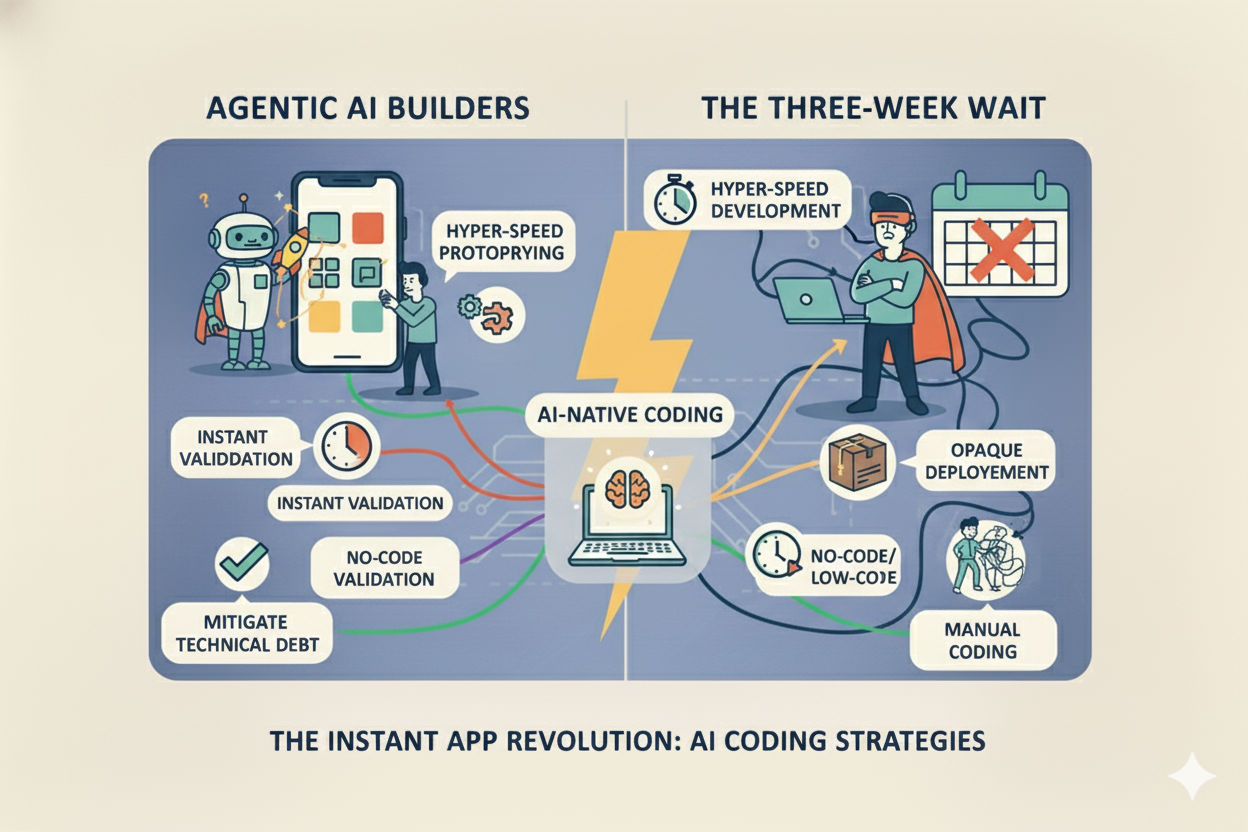
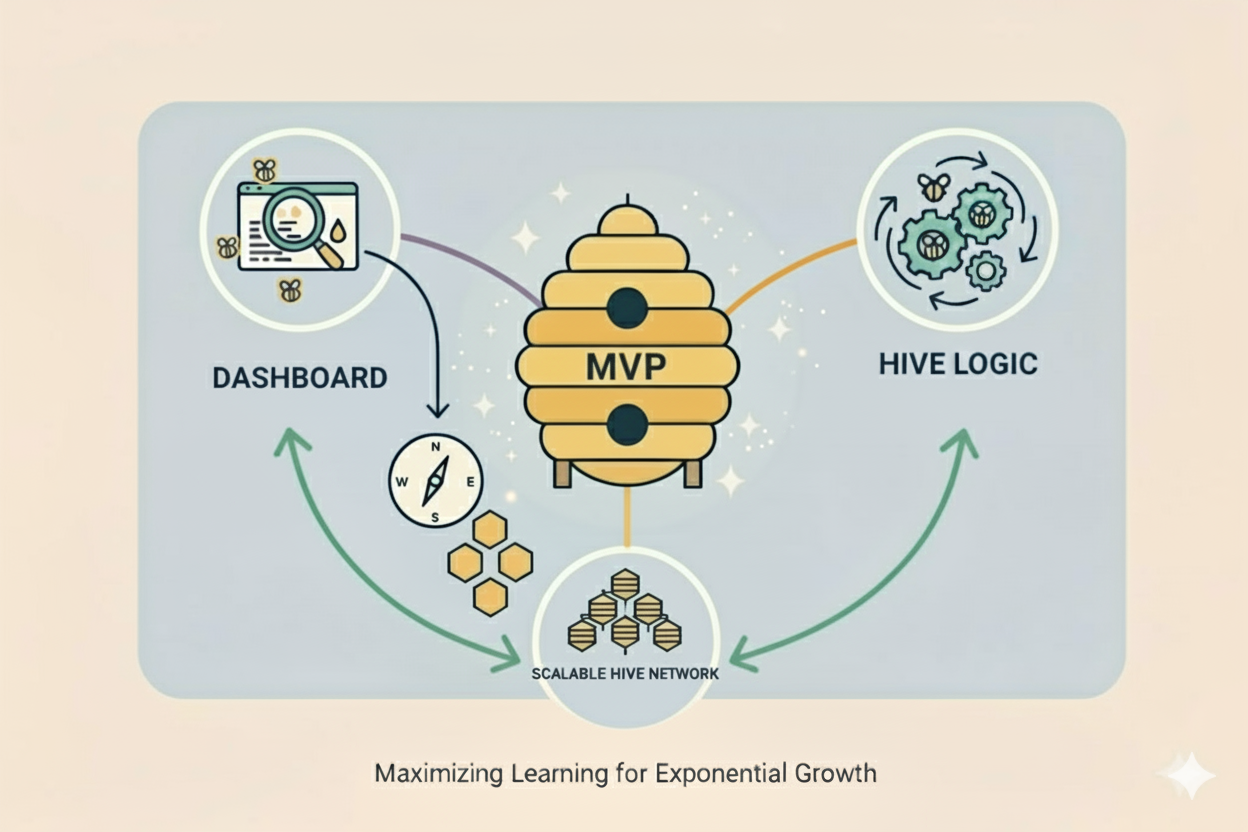
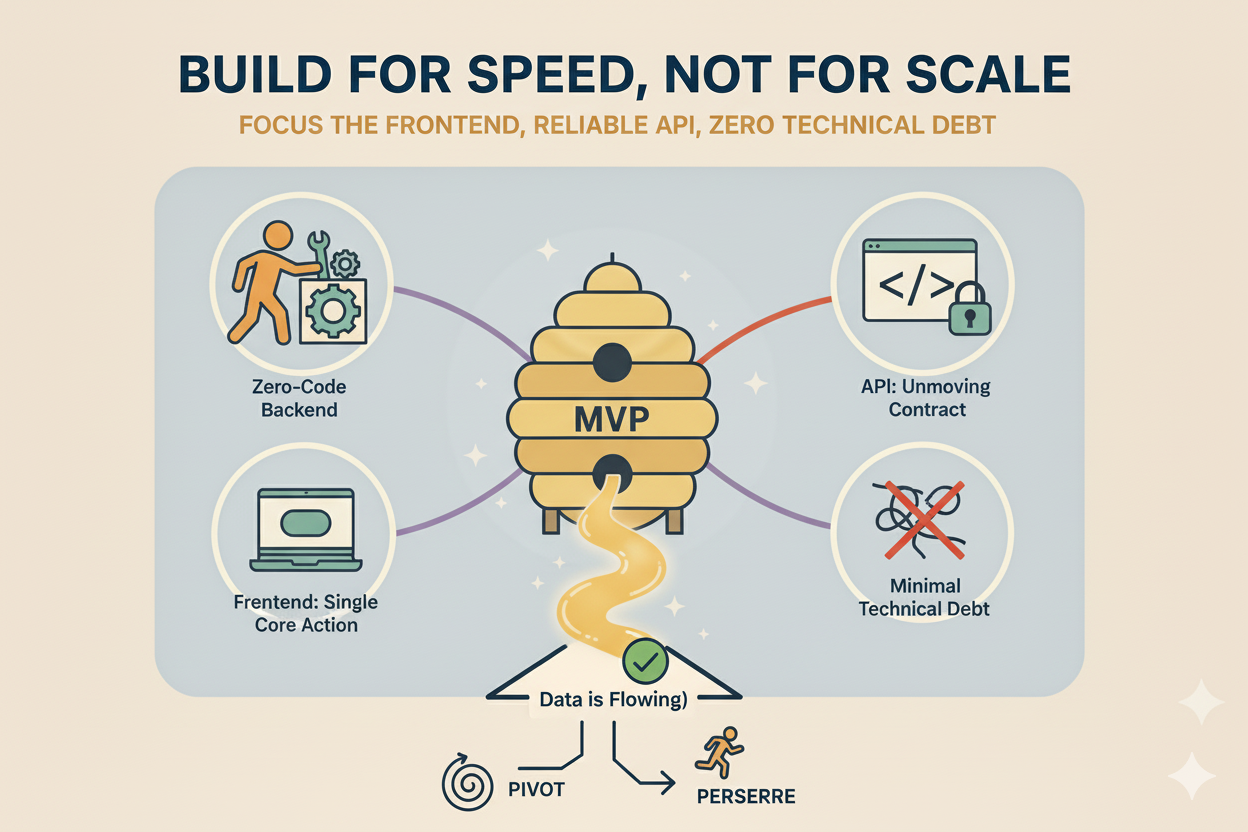
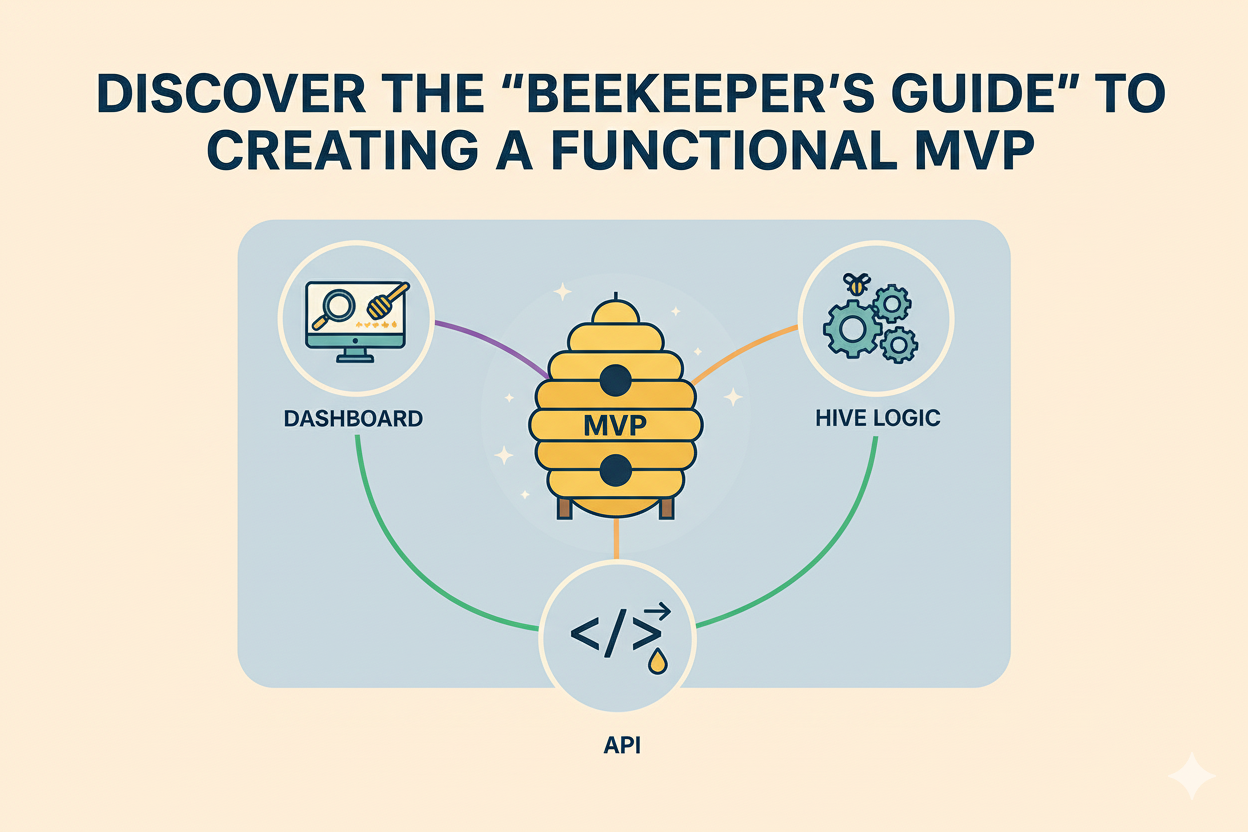
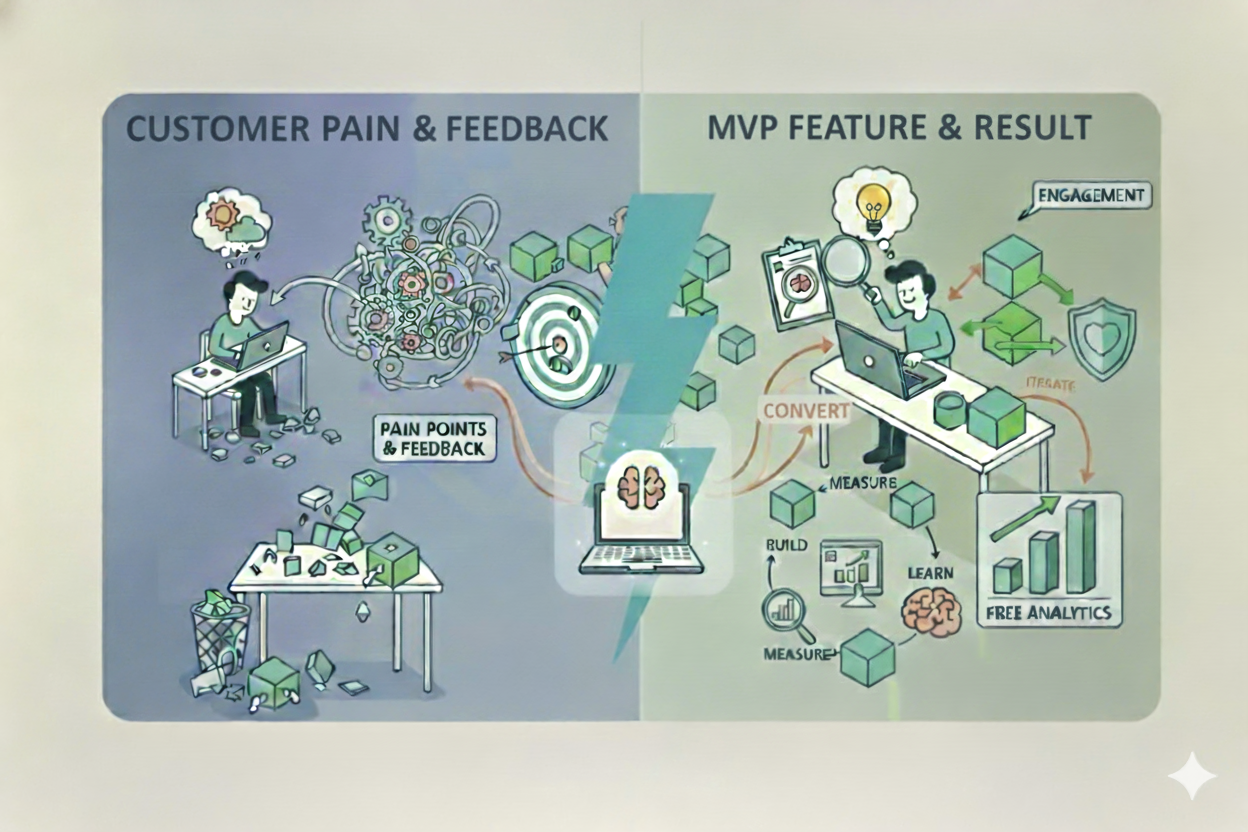
No comments yet
Be the first to share your thoughts on this article!